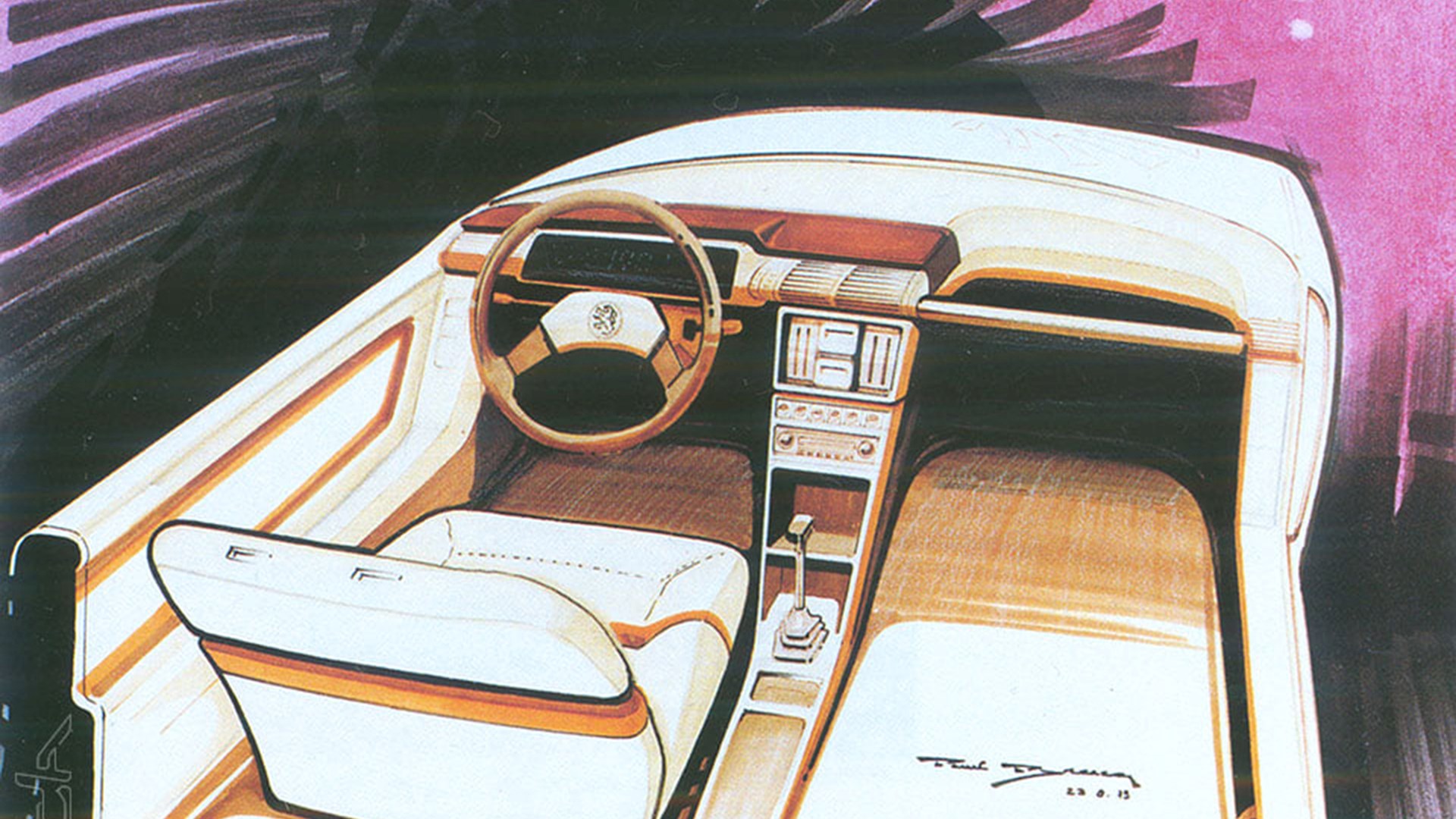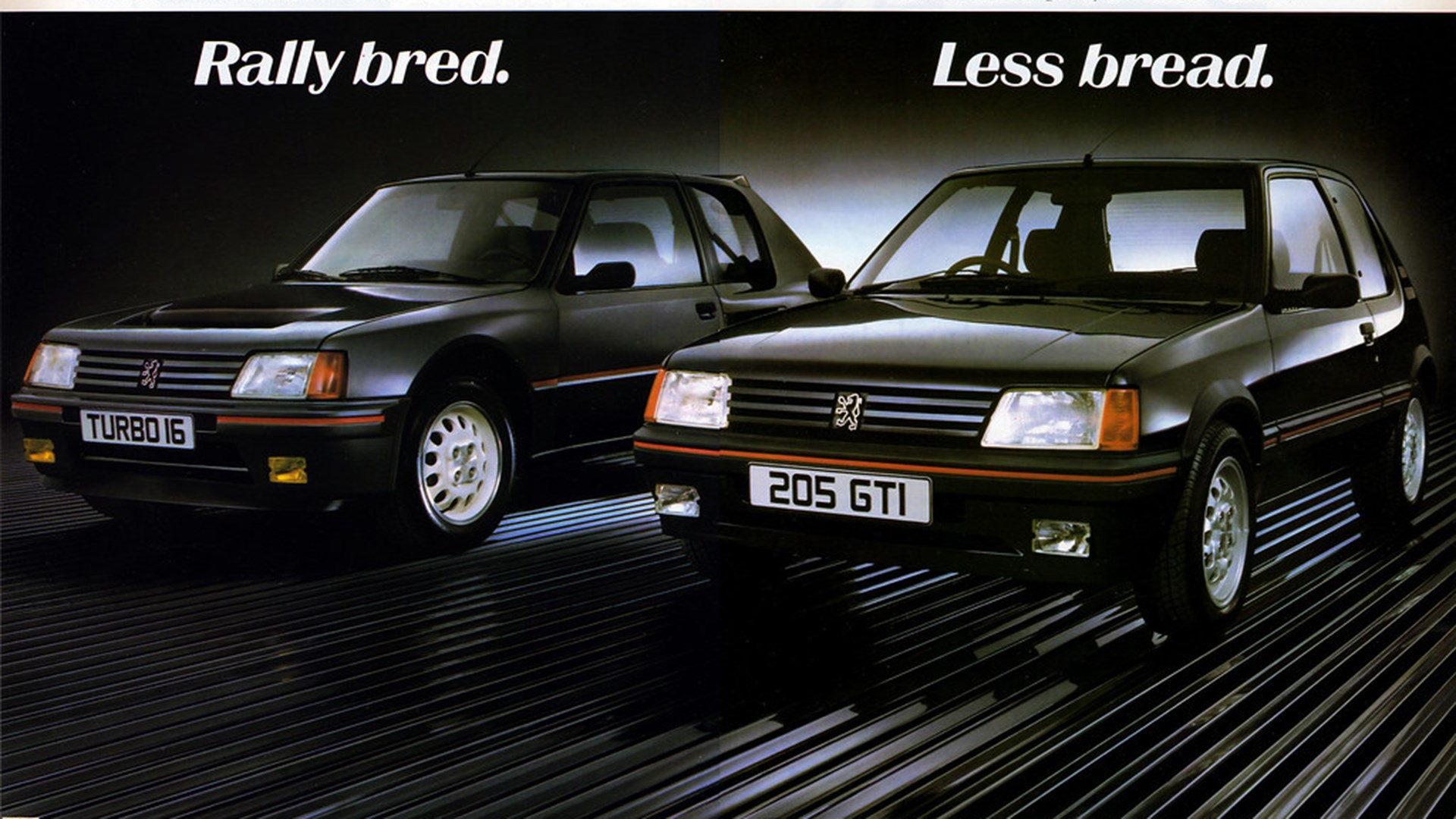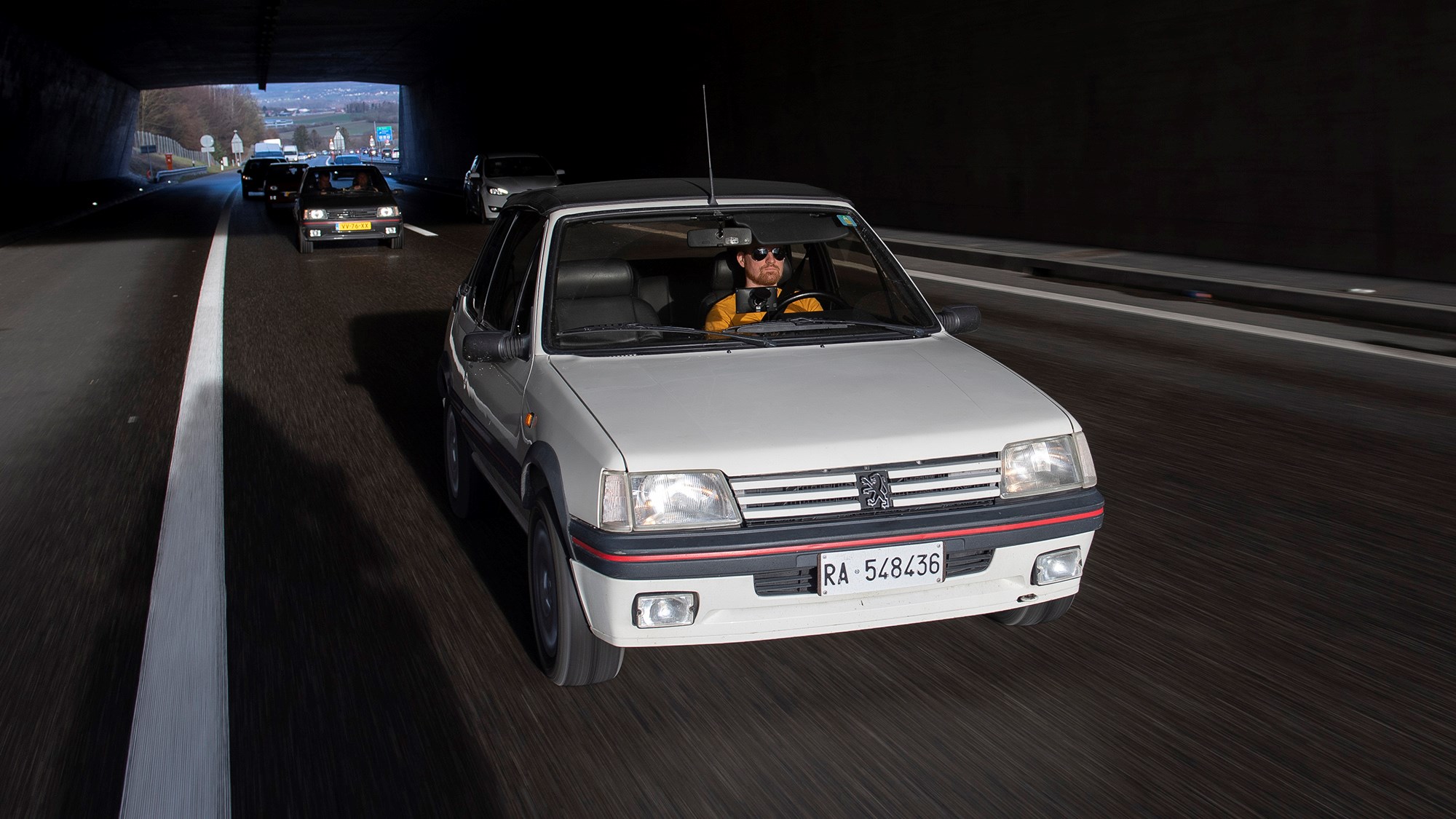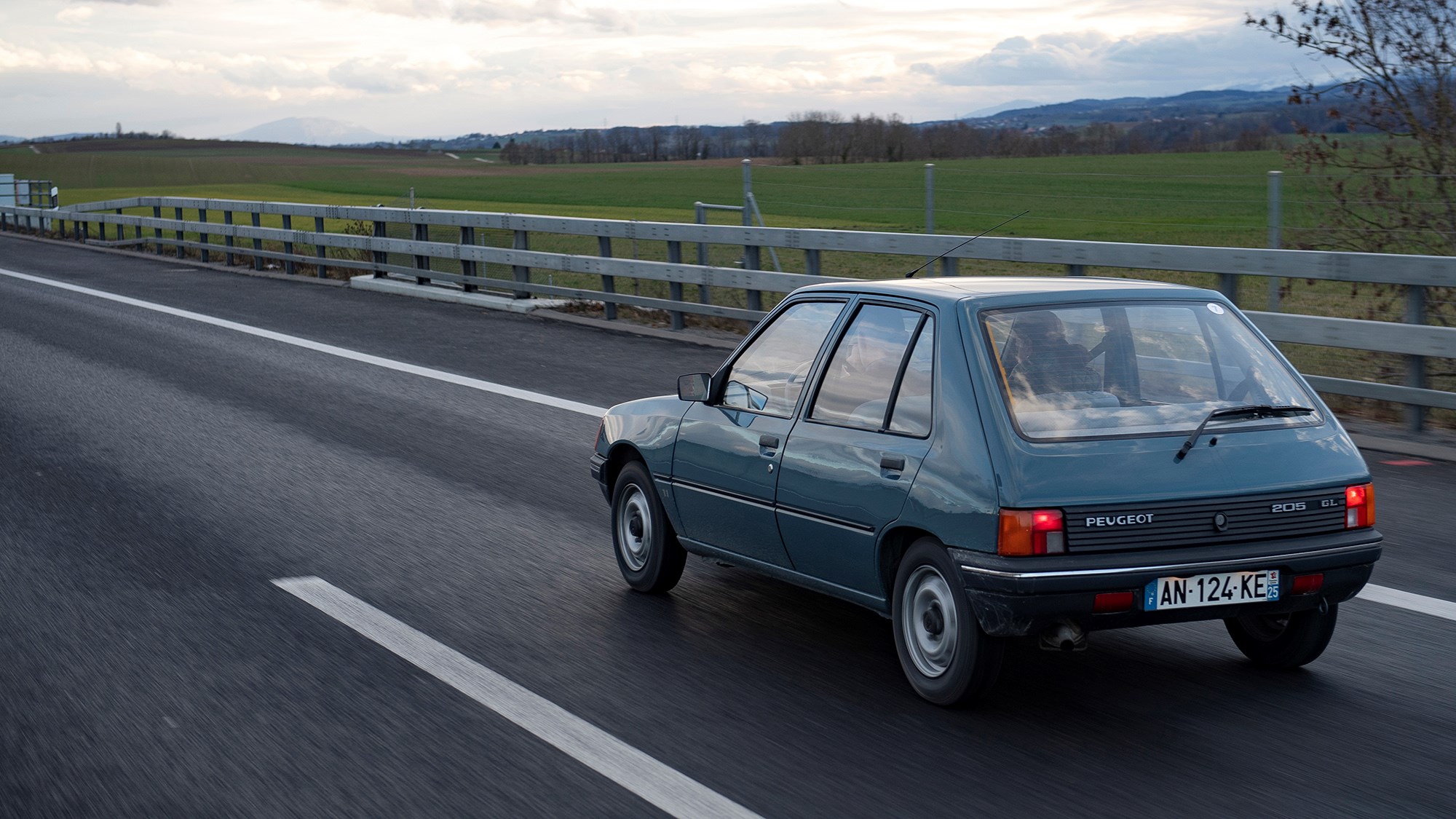► Celebrating 40 years of the Peugeot 205
► We remember the gamechanging hatch
► …and drive all the best versions
It’s funny how the passage of time can sometimes be rather cruel. Launched in February 1983, the Peugeot 205 serves to remind us of that fact savagely by effortlessly hitting the ‘big-4-0’. Four decades. Who knew? When you look at the 205 from the safe vantage point of 2023, it’s difficult not to conclude that its creation was an act of genius.
Conceived in 1977, when the typical European supermini was truly petite and Fiat 127 or Renault 5-shaped, the 205 – or Projet M24 – was deliberately designed to be bigger. Yes, it was going to slot between the 104 and 305, but also Peugeot’s marketing gurus had correctly identified that buyers were prepared to trade a tiny footprint for a little more room for passengers and luggage.
It sat on a stretched version of the 104’s platform, and incorporated a clever and compact rear suspension set-up that debuted in the 305 Estate. Unlike the 104, it was designed to take bigger power units from the outset – one of the best decisions Peugeot made with Projet M24.

Peugeot design overcomes Pininfarina
Although most people now know that the 205’s svelte looks weren’t down to Pininfarina, but were overseen by Design Director Gérard Welter (above). But the Italian styling house had been invited to create a proposal for the 205. It started out looking quite angular, but during its development, the corners were knocked off it.
However, in a shoot-out between the Italian and in-house proposals, it was the latter that won out, and was signed off for production in 1980.
The interior (below) was designed by a team led by design genius Paul Bracq. It came up with a pleasing and airy place for the driver and passengers. It also incorporated a dashboard that could be altered according to trim level, which was very much ahead of the game at the time.

A muted reception… initially
Production began in Mulhouse in November 1982 with press drives taking place in Morocco in February 1983, following its public debut on 24 January 1983. At this point, images and range information were revealed to the press – a small range of five-door hatchbacks powered by petrol engines spanning 954cc-1360cc.
The assumption today is that the Peugeot 205 exploded onto the new car market and immediately blew the doors off all of its rivals. The reality is somewhat different. For instance, CAR magazine and the Peugeot 205 have enjoyed an on-off love affair. From launch in February 1983, it acquitted itself well, and was well regarded, but hardly set the world on fire – LJK Setright’s beloved Fiat Uno was the class-leading, game-changing supermini of the moment, while the 205 was good, but not exactly great.
Even as a hot hatch, its brilliance wasn’t always recognised. CAR nailed its colours to the GTI, offering readers the chance to win one of three examples in 1984. However, as you can read elsewhere he esteemed Setright, Barker and Fraser were far from completely won over by its combination of hard ride, biscuit-tin build quality, and sublime high-speed dynamics. That’s not stopped it becoming one of the all-time 1980s icons, though.


Driving the 205…
Back in 2019 and to celebrate the launch of the Peugeot 208, we were invited by to Mulhouse to drive a selection of 205s to Geneva. As an exercise in understanding the car’s place in history, and how it stacks up today, this really was as good as it gets.
Given that the Peugeot 205 was awarded CAR magazine’s Car of The Decade for the 1980s, this was a big deal. Standing before a line-up of pristine examples lined up Peugeot’s Mulhouse factory, it was all-too easy to fall in love with the 205 all over again.
It’s a visual masterpiece – pert, curvaceous, and delicately proportioned. The 205 cast aside the conservatism of the company’s previous small car designs, embracing a bold new design language that would serve the company well until the arrival of the 206 in 1998.

Moving right along
We start with the humblest 205 in our line-up. It’s a 1983 1.1 GL, and although it’s probably hard for some of our younger readers to comprehend given the lack of performance and equipment that this car has, this would actually be a mid-range 205 when new. But there’s enough for any 1980s city slicker – so you get a radio, adjustable seats, and two door mirrors.
As you’d expect, the interior is light and airy – and a real pleasure in terms of visibility, thanks to its high seating position and slim pillars. Cars back then weren’t small tanks in which you protected yourself from the harsh world outside. Sigh…
The interesting aspect of the 205’s interior is that it’s far from cheap. The seat material is tough and pleasant to sit on, while the intricately-designed dashboard is a two-tone, multi-piece affair that must have been a nightmare for engineers to eradicate the rattles and squeaks from. That might explain why they only partially managed it.
The problem is that the plastics in our early example just don’t feel in any way rugged enough. And yes, this is a product of the 1980s, so slush-moulded soft-feel interior plastics were the stuff of dreams. But even compared with an Austin Metro or Volkswagen Polo, the 205 feels lightweight and unpleasant to touch.

What’s it like to drive?
In short, an absolute delight. Our example is powered by the 1124cc Douvrin X ‘suitcase’ engine, which develops 50bhp and 62lb ft, and is good for a 0-60mph time of 17 seconds and a maximum speed of 88mph. That’s more than quick enough, and no doubt aided by its sylph-like 780kg kerbweight. In today’s world, that’s probably not enough to stop you getting in the way of other people, but on the empty roads of France’s Alsace region, it feels more than lively enough to keep you amused, and a reminder of just how fun low-powered cars that you can keep your foot flat to the floor most of the time can be.
The transmission-in-sump engine revs willingly – and with ample noise to keep you company – but feels like it could be driven flat out all day without raising a sweat. There’s lots of gear whine accompanying the tappety-sounding power unit, but it’s nothing if not charismatic.
Handling is roly-poly, as you’d expect in a car with long-travel suspension and no anti-roll bars. But it’s tied down pretty well, with controlled damping that contains the 205’s desire to heel over quickly in bends, making it an elegant corner taker in the right hands. The steering is weighty, but full of feel, and the long-throw gearchange is sublime, and utterly mechanical to use. But for such a lightweight car, the ride is astonishing – it lops along beautifully, soaking up all the negative cambers, undulations and broken surfaces that rural France throws at it.

What about the faster 205s?
We managed to bag decent stints in a 205 XS and GT, as well as a 1.6-litre CTI Cabriolet. There were some GTIs, too, but – well – you’ve already read enough about those. As you’d expect, the XS and GT were an absolute delight, thanks to their additional power and firmer suspension set-up. Many in the classic scene believe that the 1360cc XS/GT is actually the best 205 of them all given that they’re fast enough to entertain, but comfortable and usable in every day driving. Driving them today, serves to reinforce that opinion,
The five-door 205 GT with 80bhp is more than enough to answer any criticisms you might have of the 1.1 GL’s lack of performance. The 0-60mph time is slashed to 11.0 seconds and maximum speed rises to 106mph – more than enough to worry larger, grander cars. As an all-rounder, the GT is absolutely brilliant, and whereas the 1.1 GL feels like a fragile classic car from a bygone era, it still feels comparatively modern and usable, thanks to its willing performance and fabulous handling.
The 115bhp CTI is a little more flawed, but nowhere near as floppy as expected. Perhaps the joy of driving it top-down through the mountains was enough to stop us noticing the scuttle shake and less precise dynamics. Maybe it was the straight-through exhaust, which buzzed, popped and banged off tunnel walls like a small armed conflict that won us over.

Peugeot 205: the legacy
After time in various 205s, the obvious conclusion is that those early lukewarm road tests really were an anomaly – a case that sometimes customers know far more than road testers. Here’s a car that grew into its skin to become of one the best superminis ever made. Rather like Alec Issigonis’s original Mini of 1959, the Peugeot 205’s significance and sheer brilliance took time for us all to appreciate. Yes, it really is that good.
But once it was up to speed, there was nothing stopping the 205 – it came a range of engines that spanned 954cc-1905cc, were fuelled by petrol, diesel or electric (yes, there was an electric 205), and power outputs right up to 130bhp for the legendary 1.9 GTI. You could get it in three- and five-door forms, as well as in two flavours of vans. It ended up being spun into the larger 309 (it even shared its side doors), and then went on to inspire a generation of svelte-looking Pugs – large and small.
Want to access more amazing content from CAR? Become a Member of CAR here with a 99p trial!
Today, four decades on from its launch, it’s rightfully celebrated as an all-time classic, and Peugeot is right to trumpet the 205’s achievements. The firm sold 5,278,000 205s, and the profits from this small car’s success would go on to fund a generation of substantial growth for the French company. Today, Peugeot still trades on its brilliance, and you still see loads going about their daily duties in France – the true definition of a gamechanger.
